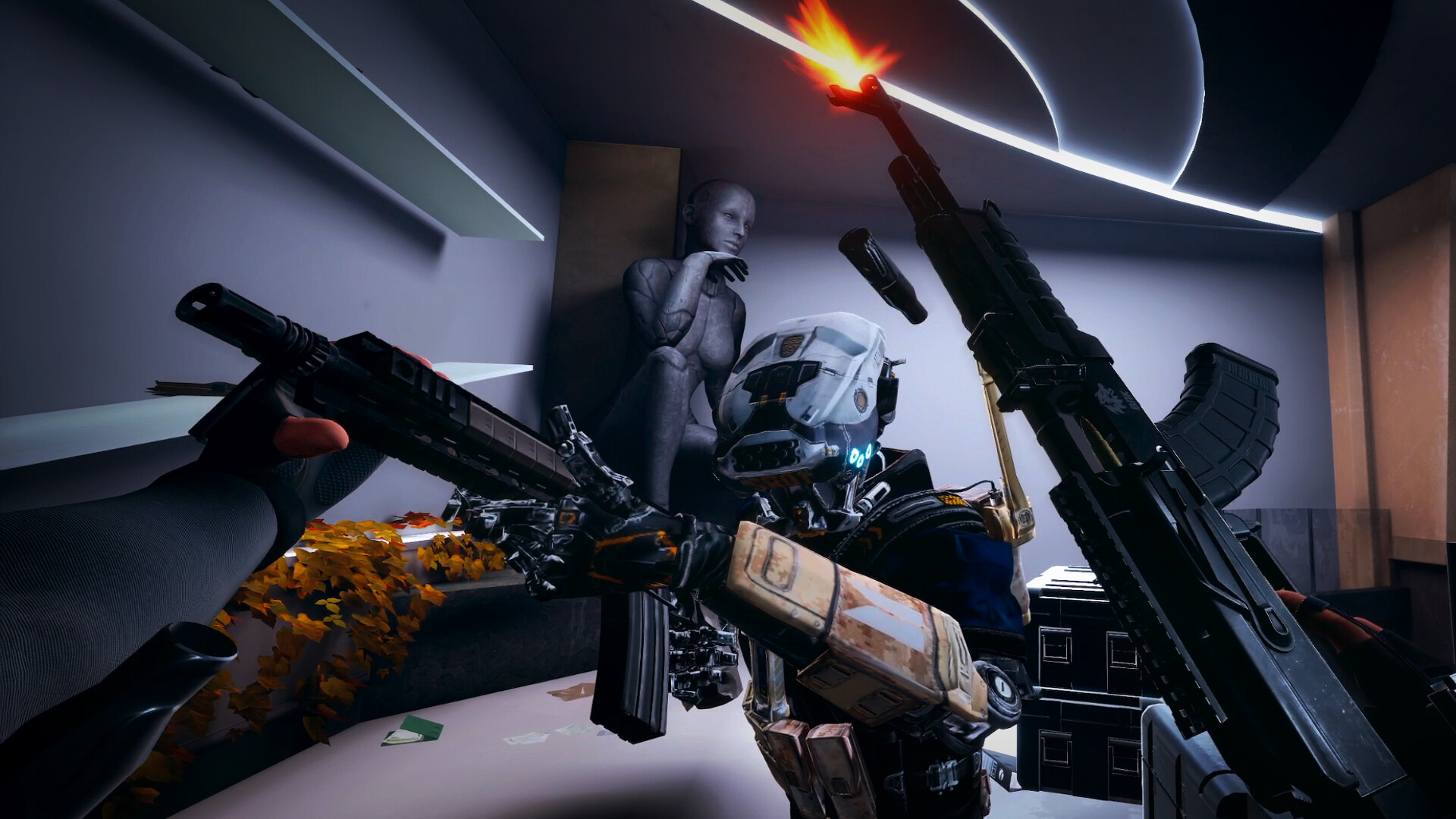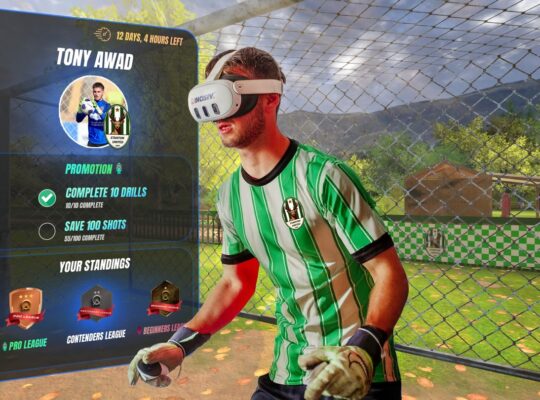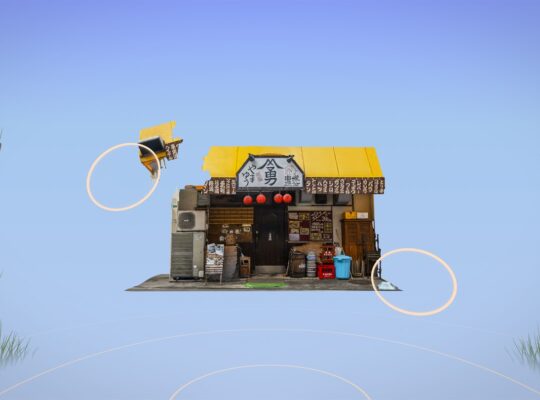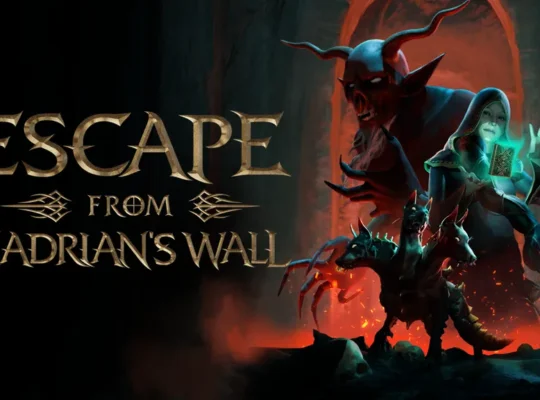Into The Darkness is the newest physics-driven, story-based title to hit the PC VR scene, now available in Early Access on Steam. After generating a lot of excitement with its earlier playtests, the game arrives under heavy expectations, especially with fans drawing comparisons to legendary titles like Boneworks. But let’s get this out of the way early: this is absolutely an Early Access release—and it shows.
A Cold Mystery With Violent Robots
Set in a near-future world, the game places you in the role of an agent working for a mysterious corporation. Your mission: infiltrate a snow-covered facility and recover vital data. Of course, things go sideways quickly. The station’s once-helpful robotic droids have turned hostile, and suddenly you’re in a fight for your life with only your fists, weapons, and a dose of physics-fueled chaos to survive.
The game’s narrative, while not groundbreaking, does manage to create a tense and eerie atmosphere, especially in the opening moments. That uneasy feeling of “something’s not right here” lingers as you move deeper into the facility—and into danger.
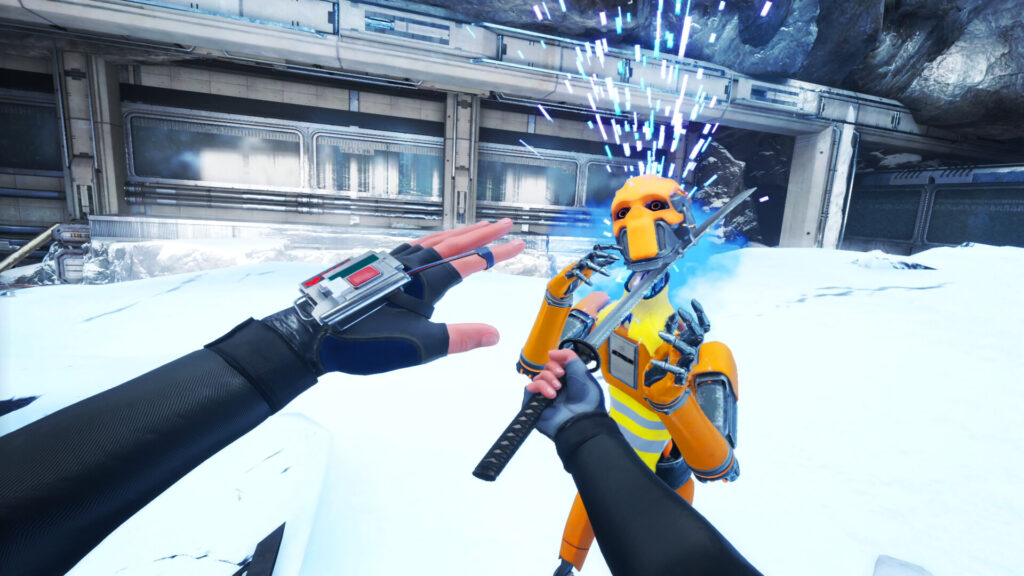
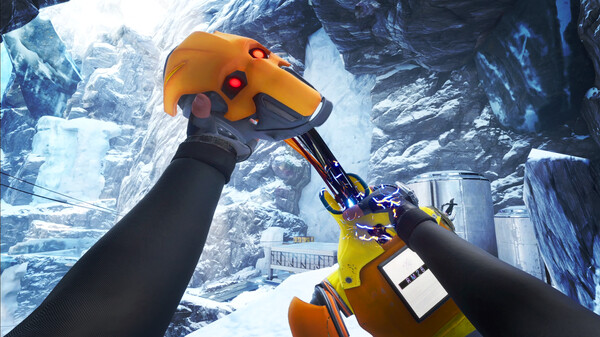
Content Offering in Early Access
At launch, Into The Darkness features three levels, each taking around 40 to 60 minutes depending on how efficiently you handle the challenges (or how long you get stuck fighting a frustrating boss, like I did). The roadmap promises six levels in total by full release, which is promising for fans who want more story and gameplay variety.
There’s also a Sandbox mode included where you can experiment with enemies and weapons. While it’s a bit barebones at the moment, the developers plan to improve it and introduce an “Arcade Mode” in the future—hopefully something that adds more replay value.
Physics Playground… With Limits
Physics is clearly at the core of Into The Darkness. You’ll notice small touches like realistic snow trails, and the ability to interact with objects and enemies using real-world motions. That said, the experience isn’t as deep as you might expect from a physics-first title.
Disappointingly, many objects are just set-dressing—you can’t pick them up or interact with them in meaningful ways. And this limitation doesn’t come with a performance boost either. Despite having decent hardware, I had to drop settings to low just to maintain smooth framerates.
Combat: Moments of Brilliance
This is where things get fun. Combat in Into The Darkness is a blend of chaotic punching, slicing, and shooting that can feel surprisingly satisfying—when it works. The ability to rip robots apart is equal parts Robo Recall and Boneworks, and when you’re in the zone, the game really shines.
Sound design is a standout here. From the metallic crunch of a headshot to the meaty thud of a landed punch, the audio feedback is immensely satisfying. Gunplay has a weight to it, although aiming can be inconsistent at times, and holstering weapons remains more frustrating than it should be.
Unfortunately, melee combat still feels a bit off. Enemies tend to swarm in clunky, uncoordinated ways, making it hard to get into a proper rhythm. AI behavior feels stuck in early prototype territory, and it kills the immersion when they just pile up like confused mannequins.
Bugs, Glitches, and Growing Pains
As exciting as the game’s potential is, there’s no avoiding the current technical mess. My first playthrough was so broken that I had to restart completely. Even my second run, which fared better, was still riddled with bugs—broken climbing mechanics, missing items in puzzles, corrupted save files, and environmental clipping that sent me falling through the map.
These issues are part of the Early Access package, but they definitely dampen the experience. At times, it feels like you’re testing the game more than playing it.
Final Thoughts: Wait and Watch
There’s no denying that Into The Darkness has something special buried beneath the bugs and rough edges. The core concept is solid, the atmosphere is engaging, and the roadmap gives hope for what’s to come. But right now, it’s very hard to recommend to the average VR gamer.
If you love supporting early projects and watching them grow, or if you’re a die-hard fan of janky physics fun, there’s enjoyment to be had here. For everyone else, it’s probably best to keep an eye on this one and revisit it down the line when it’s more polished and complete.


